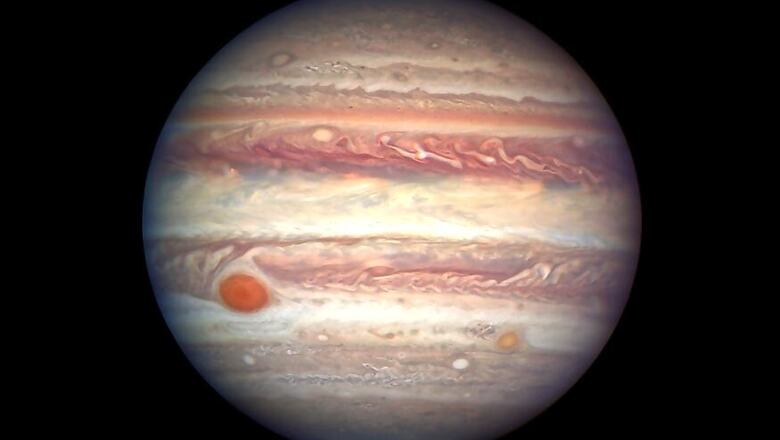
views
NASA's James Webb Space Telescope - the most ambitious and complex space observatory ever built - will be used to study Jupiter's Great Red Spot, shedding new light on the enigmatic storm that has been raging on the planet for over 350 years. Jupiter's iconic storm is on the Webb telescope's list of targets chosen by guaranteed time observers, scientists who helped develop the incredibly complex telescope and among the first to use it to observe the universe. One of the telescope's science goals is to study planets, including the mysteries still held by the planets in our own solar system from Mars and beyond.
Also Read: Apple May Work With Samsung For Developing 'A13' Chip: Report
Researchers plan to use Webb's mid-infrared instrument (MIRI) to create multispectral maps of the Great Red Spot and analyse its thermal, chemical and cloud structures. They will be able to observe infrared wavelengths that could shed light on what causes the spot's iconic colour, which is often attributed to the Sun's ultraviolet radiation interacting with nitrogen, sulphur and phosphorus-bearing chemicals that are lifted from Jupiter's deeper atmosphere by powerful atmospheric currents within the storm. Using MIRI to observe in the five to seven micrometre range could be particularly revealing for the Great Red Spot, as no other mission has been able to observe Jupiter in that part of the electromagnetic spectrum, and observations in such wavelengths are not possible from Earth. Those wavelengths of light could allow the scientists to see unique chemical byproducts of the storm, which would give insight into its composition.
Also Read: Xiaomi Mi 8 Series Sold 1 Million Devices in Eighteen Days
"We'll be looking for signatures of any chemical compounds that are unique to the Great Red Spot, which could be responsible for the red chromophores," said Leigh Fletcher, a senior research fellow at the University of Leicester in the UK, who is the lead scientist on the Webb telescope's observations of Jupiter's storm. Chromophores are the parts of molecules responsible for their colour. Webb's observations may also help determine whether the Great Red Spot is generating heat and releasing it into Jupiter's upper atmosphere, a phenomenon that could explain the high temperatures in that region. "Any waves produced by the vigorous convective activity within the storm must pass through the stratosphere before they reach the ionosphere and thermosphere," Fletcher said.
Also Read: Apple's iOS 12 Public Beta Available, Try it Out on Your iPhone Now
"So if they really do exist and are responsible for heating Jupiter's upper layers, hopefully, we'll see evidence for their passage in our data," he said. Generations of astronomers have studied the Great Red Spot; the storm has been monitored since 1830, but it has possibly existed for more than 350 years. The reason for the storm's longevity largely remains a mystery, and the key to understanding the formation of storms on Jupiter is to witness their full life cycle - growing, shrinking, and eventually dying. "We did not see the Great Red Spot form, and it may not die anytime soon, so scientists must rely on observing "smaller and fresher" storms on the planet to see how they begin and evolve, something that Webb may do in the future, said Fletcher.
Also Watch: Top 5 Budget Smartphones - Xiaomi Redmi Y2, Honor 7C and More


















Comments
0 comment